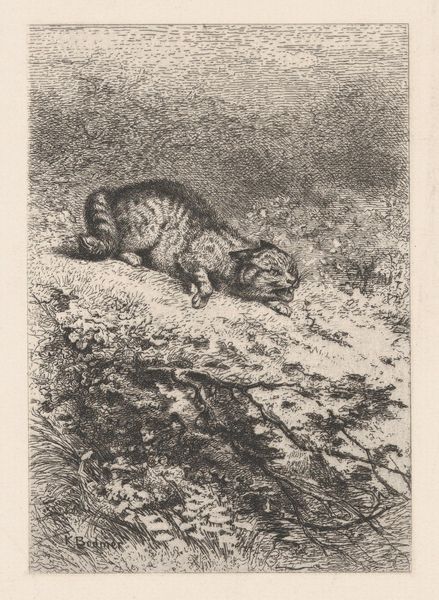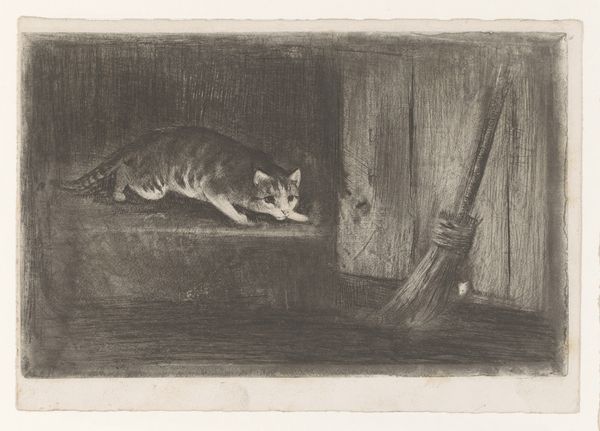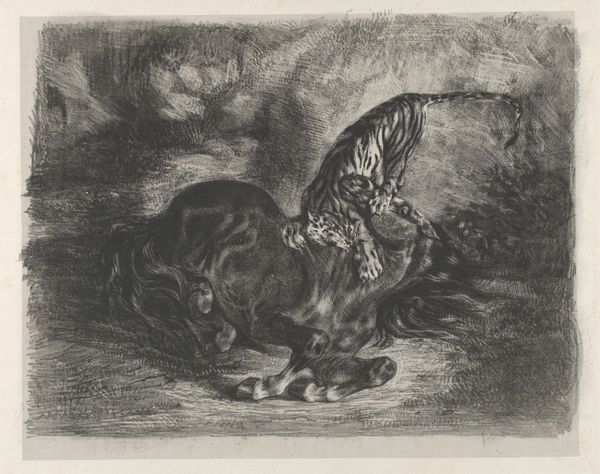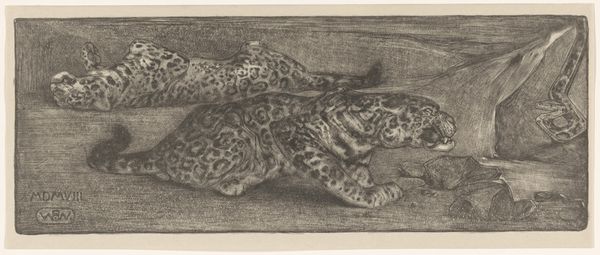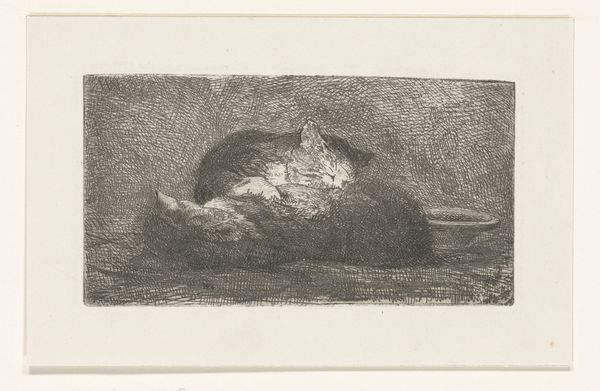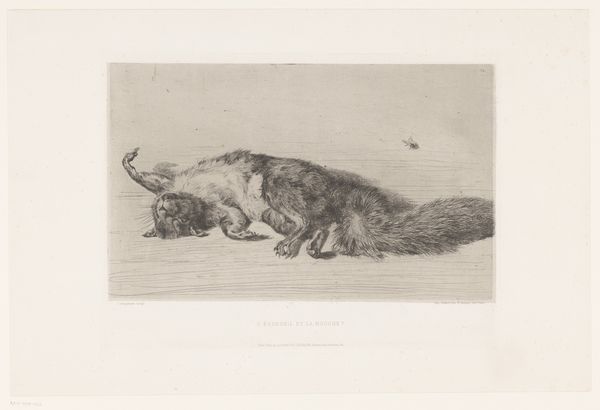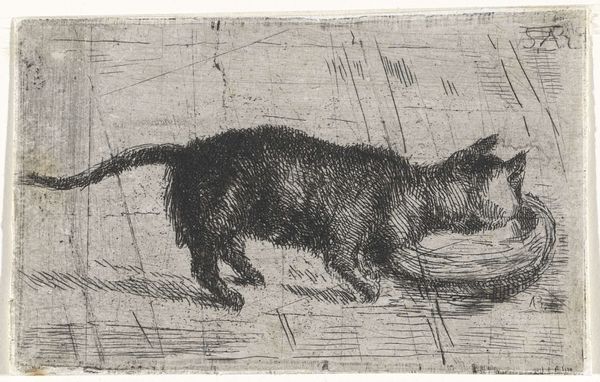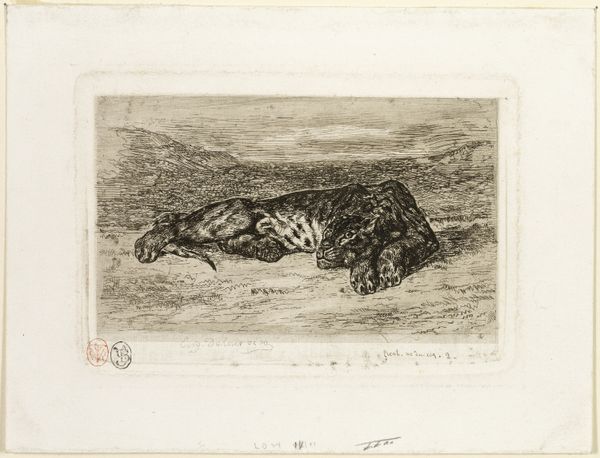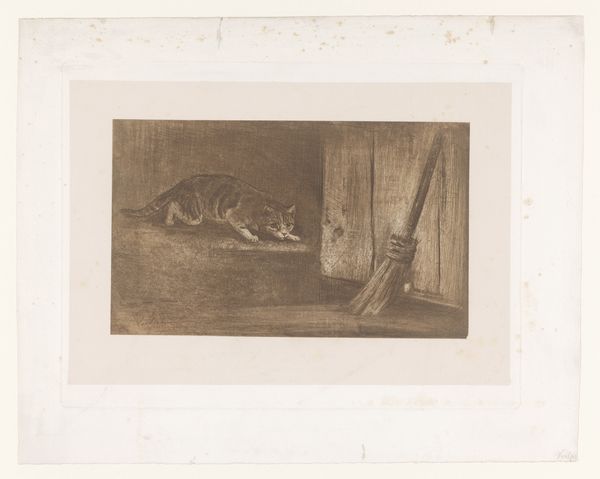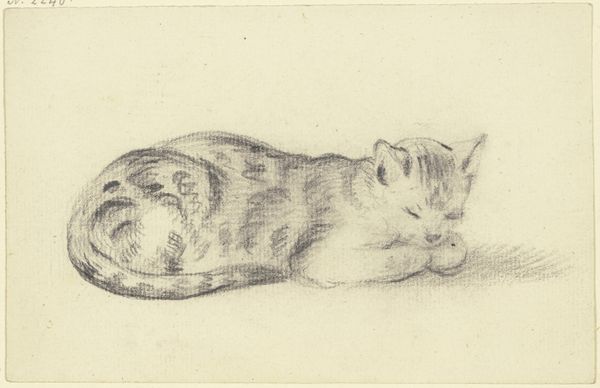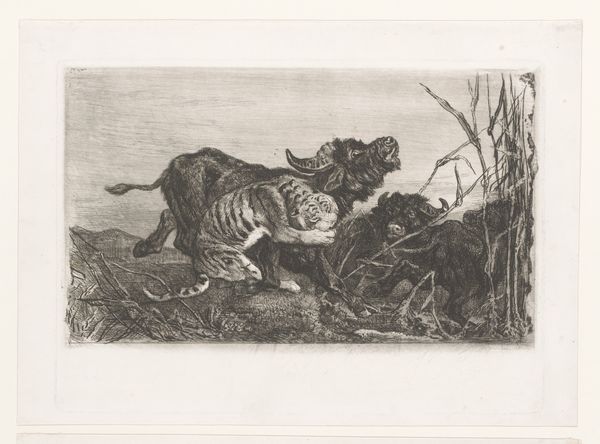
Tiger Lying at the Entrance of its Lair 1823 - 1835
0:00
0:00
drawing, print, etching
#
drawing
# print
#
etching
#
landscape
#
figuration
#
romanticism
Dimensions: Image: 5 1/2 x 3 9/16 in. (14 x 9 cm) Plate: 5 7/8 x 3 3/4 in. (14.9 x 9.6 cm) Sheet: 9 1/16 x 8 1/4 in. (23 x 20.9 cm)
Copyright: Public Domain
Eugène Delacroix created this etching of a tiger, using a copper plate and acid to bite the image into the metal. This was a labor-intensive process. Look closely, and you can see the etched lines creating the tiger’s fur, the shadows of its lair, and the flat plane on which it rests. The velvety blacks are achieved by repeatedly dipping the plate in acid, deepening the etched lines, which hold more ink. Delacroix was a master of light and shadow, and he used the etching process to create a dramatic and evocative image. Printmaking allowed Delacroix to reproduce his images and distribute them widely, catering to a growing market for art. While he also made large-scale paintings for wealthy patrons, works like this tiger allowed a broader audience to access his romantic vision. This etching exemplifies how materials, techniques, and social context intertwine, challenging the traditional divide between fine art and craft.
Comments
No comments
Be the first to comment and join the conversation on the ultimate creative platform.
